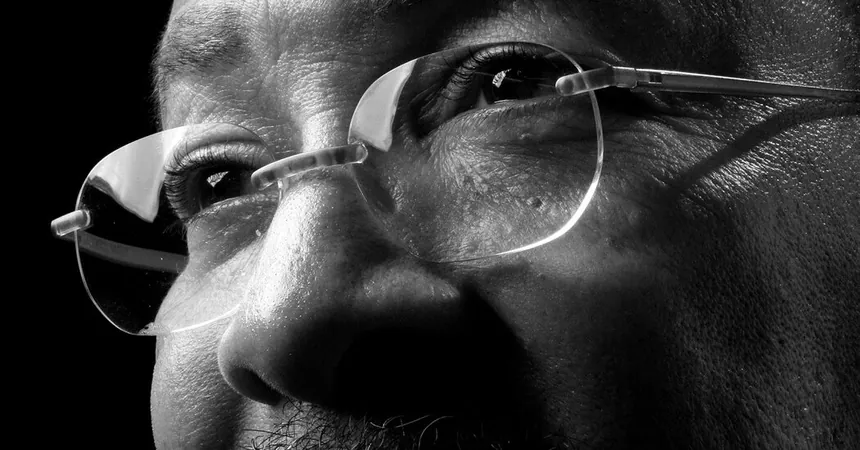
Revolutionizing Senior Oral Health: How AI is Changing the Game in Hong Kong
2024-12-18
Author: Lok
Introduction
As Hong Kong faces an escalating crisis with its ageing population, the dental healthcare system is feeling the impact. With a mere 3.7 dentists available for every 10,000 residents, the backlog of dental care is staggering—patients endure waiting times of 12 to 18 months for routine check-ups, and for more complex treatments like root canals, the wait can stretch to nearly three years. These excessive delays can exacerbate existing oral health problems, leaving many seniors in need of urgent care, yet unable to access it.
The Creation of GUM AI
To combat these challenges, a team of researchers at the University of Hong Kong's Faculty of Dentistry has taken a groundbreaking step forward with the creation of GUM AI. This innovative mobile health platform melds artificial intelligence technology with oral health screening, aiming specifically to enhance access to dental care for the elderly demographic. Designed to provide quick, efficient, and economical oral health assessments, GUM AI paves the way for a practical solution that helps alleviate congested traditional dental appointments.
Rapid Assessment Capabilities
What sets GUM AI apart is its rapid assessment capability. Utilizing intraoral photographs from users, the AI analyzes the health of teeth and gums, delivering results in mere seconds. The findings are presented in an easy-to-understand color-coded system—red indicates poor oral health, yellow signifies caution, and green represents good health. This visual aid allows seniors and caregivers alike to swiftly grasp oral health statuses, facilitating timely interventions if necessary.
Effectiveness and Accuracy
The effectiveness of GUM AI has been validated through rigorous trials, involving over 500 participants, which demonstrated an impressive accuracy rate surpassing 90% when gauging AI results against professional dentist evaluations. This high accuracy not only signals reliability but also highlights its potential to dramatically improve the efficiency of dental care services.
Community Initiative: Dental AI Community Care Project
To further extend access to this promising technology, the HKU Faculty of Dentistry launched the Dental AI Community Care Project. With the support of local community organizations and political figures, this initiative aims to bring GUM AI services directly to underrepresented elderly populations. Volunteers, including dental students and local service teams, receive training to expertly use the AI tool for oral health screenings, and they offer tailored oral hygiene advice based on screening outcomes. These services will be made available in various community settings such as elderly centers and community halls, ensuring easy access for seniors with mobility challenges.
Reducing Dependency on Traditional Dental Appointments
By empowering non-dental professionals to utilize GUM AI, dependency on traditional dental appointments for routine checks is reduced. This allows dental practitioners to concentrate on patients with more intricate dental health issues, effectively alleviating the existing manpower shortage and decreasing waiting periods for essential care.
Cost Efficiency and Preventive Care
The advent of AI in dental care signifies a major leap towards enhancing healthcare efficiency and minimizing costs. Many elderly residents in Hong Kong shy away from dental visits due to financial limitations, often leading to untreated oral diseases that manifest into severe health complications requiring costly treatments. GUM AI aims to reverse this trend by promoting early detection and intervention, ultimately preventing the escalation of oral health issues and preserving vital resources—both personally for individuals and within the broader healthcare system.
Promoting Awareness and Improved Hygiene Practices
Through the promotion of preventive care via GUM AI screenings, the project fosters greater awareness of oral health, encourages better hygiene practices, and targets the reduction of disease prevalence. The efforts in expanding access to these services across Hong Kong’s 18 districts signify a critical move towards improving the oral health landscape for seniors, forging a collaborative model that promises to ease the burden on the healthcare system while enhancing the quality of life for the elderly population.
Conclusion
Is Hong Kong set to lead the way in the digital transformation of elderly healthcare? The answer may lie in the innovative GUM AI and its impact on the dental health of our seniors!






 Brasil (PT)
Brasil (PT)
 Canada (EN)
Canada (EN)
 Chile (ES)
Chile (ES)
 España (ES)
España (ES)
 France (FR)
France (FR)
 Hong Kong (EN)
Hong Kong (EN)
 Italia (IT)
Italia (IT)
 日本 (JA)
日本 (JA)
 Magyarország (HU)
Magyarország (HU)
 Norge (NO)
Norge (NO)
 Polska (PL)
Polska (PL)
 Schweiz (DE)
Schweiz (DE)
 Singapore (EN)
Singapore (EN)
 Sverige (SV)
Sverige (SV)
 Suomi (FI)
Suomi (FI)
 Türkiye (TR)
Türkiye (TR)